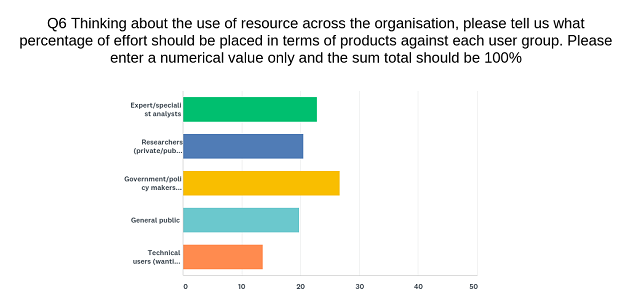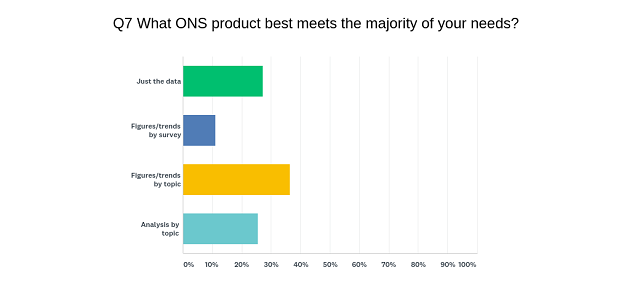Weeknotes from Content and Publishing (S1 E5)
Hello there. I manage the Publishing, Content Design and Digital Content teams at the ONS in Digital Publishing. Each week I’m attempting to give an overview of my work, key projects we’re involved in and encourage my wider team to blog more often about their work. You can find me on Twitter.
It’s been, I’ll confess, a strange week. Most of the Newport office worked from home this Tuesday and Wednesday due to some water issues on site, but a few of us came in and it was both eerily quiet, and quite productive.
Work I’ve been doing on a paper setting out our publishing strategy for senior colleagues has gone from a tangled five pages into something far more elegant in the hands of my director. Any journalist, or former journalist, is lying if they say they don’t mind having their work edited or changed, but in an organisation with as many layers as the ONS it does help to have someone with a more helicopter view pull together a more summarised perspective.
We’re planning to set out some ambitious aims to senior colleagues – which is exciting – but the pragmatist in me also wants less lofty, more nuts and bolts challenges solved too.
This one, as they say, will run and run.
The really good news is that we’ve had 3,000 responses from ONS users to a survey on their priorities and needs. I’m pulling together a summary, along with the views of around 100 statistical and analytical colleagues too, to share with senior managers. I don’t think I’m breaking any embargoes if I share some of the results:
1. Users agree that providing statistics and understanding around topics and issues that matter is important
2. Users say the balance of effort for different audience groups should be quite evenly spread – although government/policy makers are the priority

3. Users said figures and trends by topic/theme was their most needed product type

I’ll write more about the findings of the surveys in a future blog post.
Beyond the publishing paper I had a great session with some of my team and a colleague who is co-ordinating census analysis topin down all the questions we need to answer to progress our work and ambitions successfully. It was really cathartic just to get the known unknowns down onto Post-it Notes.
We’re al so working on some slides to showcase how we could approach delivering the first statistical output from Census 2021 data, and where we could stretch the ambitions of our products. I spent probably too long making some bad illustrations for the slides – I’m no designer – but it helped me at least to articulate some thinking.
I’ve been working with my colleague Callum Thomson on plans for our Data Journalism effort to provide more agile collaboration and expertise to the organisation. Most of our time is spent on more lengthy projects, but we want to bring expertise in things like idea generation, format selection, narrative writing, headline writing to more teams more often. Hopefully, we’ll see the fruits of this work in the near future.
Kieran Forde, our Head of Content Design, and I caught up with some government colleagues in the Race Disparity Unit to look at how they’ve tried to solve the problem of making products for different types of users. It was a really positive conversation and we’re keen to spend more time sharing ideas and solutions.
Our annual People Survey results came out a few weeks ago and it’s fair to say there’s some work we need to do to better support the team. It’s not always easy to understand the exact drivers for some concerns so we’ve opened up channels for colleagues to give managers more detail and to vote on key areas we want to improve.
I suspect one of the areas of concern to some of our editors is a rising volume of statistical releases with a late sign off over the last six months, keeping people in the office longer than necessary. This week I caught up with two of the team to look at our monitoring of the problem – which has improved – and steps we want to take to make matters even better.
The statistical production chain is a long and complex one and sadly all too often challenges ripple along and coalesce at the publication end of the process. We’re trying to unpick that and work out where the problems are occurring.
